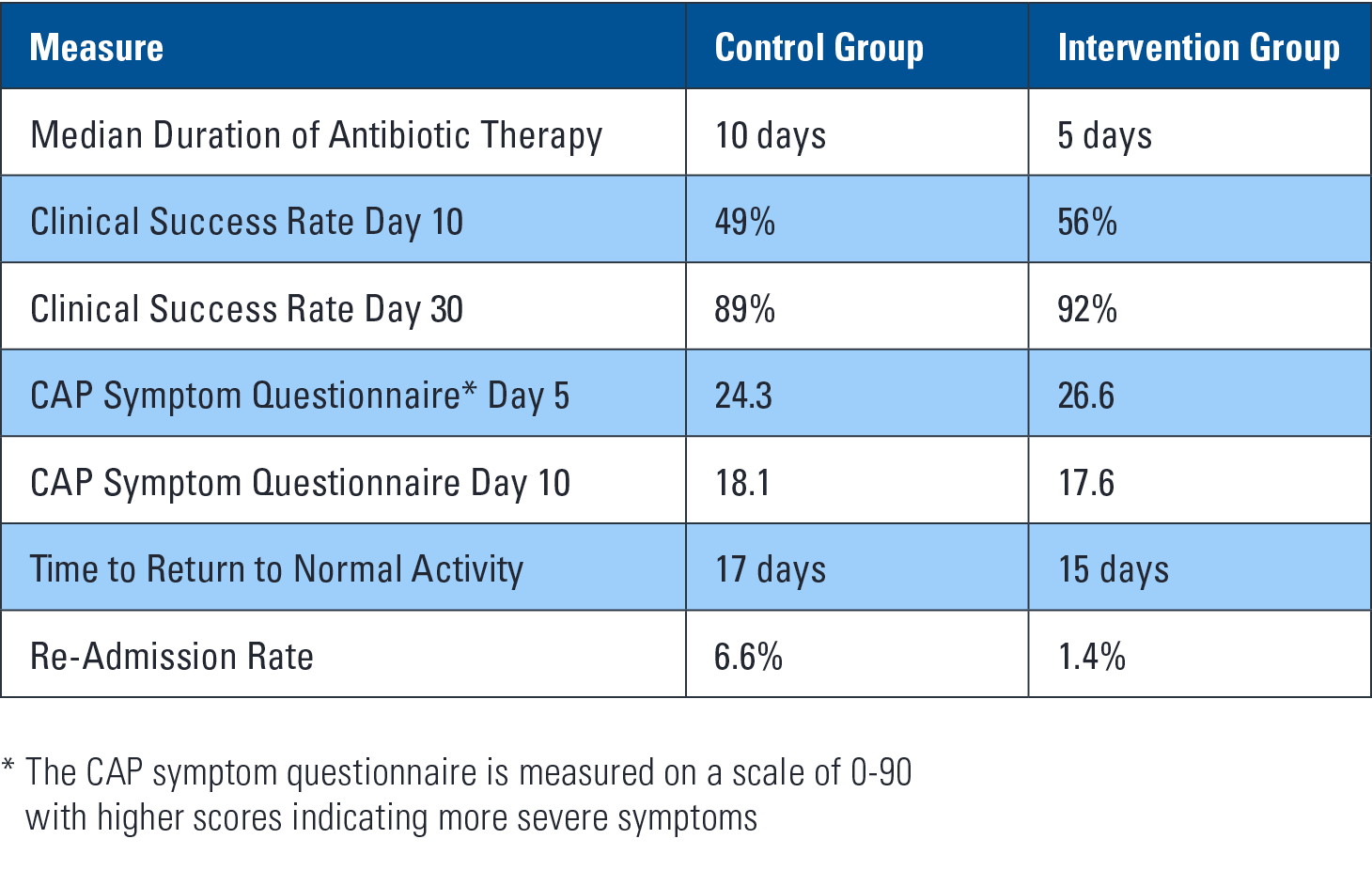
Nearly 1,700 years ago, Constantine the Great declared that there would be 7 days in a week. Today, that ancient decree remains a primary reference for duration of antibiotic therapy, leading physicians to treat infections in intervals of 7 days.
While this has long been the standard duration of antibiotic treatment, it has never been established as the optimal duration. Now, a new clinical trial offers strong evidence that shorter courses of treatment are in fact just as effective as longer courses, specifically in the case of community-acquired pneumonia (CAP).
–
“As shorter treatments can in turn lead to less antibiotic resistance, fewer adverse effects, lower cost and improved adherence, this is encouraging news indeed.”
The study set out to validate the Infectious Diseases Society of America (IDSA) and American Thoracic Society (ATS) guidelines for duration of antibiotic treatment in CAP patients. These guidelines recommended a minimum 5-day course of treatment based on clinical stability criteria, as opposed to the standard antibiotic treatment of 7 to 14 days, which is based mainly on expert opinion.
312 patients were randomly placed in an intervention or control group. Those in the intervention group were treated according to the ISDA / ATS guidelines, while duration of antibiotic treatment for the control group was determined independently by physicians.

Evaluating both the clinical success rate as well as patients’ scores on a CAP symptom questionnaire, the study showed little difference between the two groups. The duration of therapy, however, was much shorter for the intervention group (an average of 5 days compared to 10 for the control group). Those receiving a 5-day course of antibiotics saw no less improvement than those who received a 10-day course. The implications are significant not only for physicians treating CAP, but also suggest a better strategy for determining the duration of antibiotic treatment for all infections. By basing this decision on clinical response rather than arbitrary treatment lengths, physicians could significantly reduce treatment durations.
As shorter treatments can in turn lead to less antibiotic resistance, fewer adverse effects, lower cost and improved adherence, this is encouraging news indeed.




